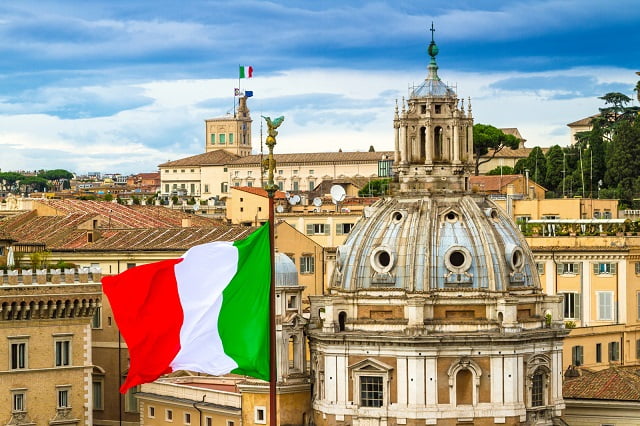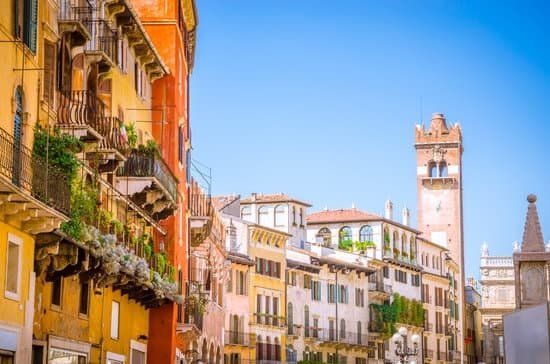
For first-time travelers to Italy, planning a vacation can seem like an overwhelming process. With several different language and cultural norms to consider, it helps to have a few Italy travel tips on hand. To make sure your trip goes smoothly, there are some essential things travelers should know before they embark.
The most important thing to note when traveling to Italy is that you must purchase the right transportation tickets if you plan on using public transportation. Rome’s has an extensive public transit system which includes both subways and buses. Purchasing the wrong type of ticket can lead to hefty fines and may even interrupt your plans for sightseeing or leisure activities.
Be sure to plan ahead and research all the different types of fares available before you decide what type of ticket is right for you. Additionally, downloading the official public transport app will reduce stress during your journey-it makes buying tickets easier and helps identify train delays or reroutes in real time.
In terms of dining out in Italy, be sure to choose restaurants that locals frequent as opposed to tourist-heavy spots clustered near popular destinations like Vatican City or the Colosseum. Tourist traps tend to offer low quality dishes that promise big flavor but lack follow through on their promises; local eateries will give tourists an authentic taste of Italian cuisine at prices suited for all budgets.
Additionally, tipping after meals in Italy isn’t expected, however it is customary to leave behind coins or small bills when pleased with service received at restaurants or cafes.
Italy boasts a wide array of entertainment-which is great news for those who want a party atmosphere during their stay. The nightlife scene varies between cities-Milan could almost be considered the Italian capital for clubbing while Venice offers traditional bacaro taverns where people gather for a glass of spritz or prosecco.
While having fun is encouraged remember not create noise disturbances after 10pm; most cities adhere strictly to this rule and it’s best not to push any boundaries given law enforcement’s lack of tolerance towards group disturbances late at night.
Overall taking these popularItaly travel tips into account should set travelers up perfectly when vacationing in beautiful Italy – just be prepared with the right knowledge so you can enjoy your vacation without worry.
Research Tips for Planning Your Trip
Researching ahead of time is the best way to ensure success when traveling to Italy. There are many things that can be done before a trip to the beautiful country of Italy in order to make the most out of a vacation. Taking some tips into consideration is an effective way of doing this.
The first step in planning a trip to Italy is deciding what to see. With so much diverse history, culture, and cuisine, it can be hard to choose what sights will capture your imagination and create incredible memories. A great starting point is researching Italian cities online as there are numerous blogs and websites dedicated to providing information on each one’s attractions.
Make sure you plan well ahead of time by booking tickets for popular sights like the Colosseum or leaning tower of Pisa, as these tend to fill up quickly. Additionally, read up on local customs such as proper dress code for religious sites or appropriate dining etiquette, as this can help avoid any embarrassment or disrespecting behaviors while abroad.
When searching for an accommodation type suitable for your budget during your stay in Italy, there are numerous options available such as hostels, Airbnb’s and luxury hotels – just make sure you shop around and read reviews prior to making a purchase.
If you decide on staying in a hotel compared to another option such as Airbnb’s you may be able to take advantage of discounts for extended stays in some locations allowing you more time explore all that Italy has offer without breaking the bank.
Once everything has been arranged transport-wise – flights booked, car rental agreements set in place etc., it is important not forget about the travel insurance aspect which should not be overlooked when visiting a foreign country where certain risks may apply that aren’t accounted for domestically; doing so could save a lot money should something go awry during your scheduled stay abroad.
Public transport within Europe also serves as an excellent way save money when getting around with several railway lines throughout major Italian cities connecting commuters from all over the world at relatively low costs if booked in advance effectively plan out travel schedules accordingly.
By following these simple tips just mentioned it is easy put together an amazing trip Italian holiday no matter what kind traveler’s individual needs or budget may be – embrace chance explore stunning landscapes enjoy some delicious Italian cuisine all along way; happy travels.
Budgeting Tips
When traveling to Italy, it’s important to plan ahead and budget in order to maximize your experience. One of the best ways to do this is by staying in hostels or Airbnb accommodations rather than luxurious hotels. Hostels tend to be much more affordable, but you can still surrounding yourself with Italian culture in one of these locations. Many hostels also have fun events and activities that can help break up your days while providing a unique cultural experience.
Another budgeting tip for those travelling to Italy is to find restaurants that are not located directly in tourist areas. Usually, these restaurants are off the beaten path and offer fantastic meals at reasonable prices that those not from the area may not know exists.
For snacks and lunchtime meals you can visit the popular panini shops or gelaterias that dot most Italian cities or small towns, but for dinner you might want something a bit more out of the way if you’re looking for a better deal while visiting.
Finally, many tourists don’t realize how easy it is to get around Italy using its well-developed transportation system – including trains, buses and coast guard ferries. These modes of transport make it possible to get around quickly and easily while avoiding expensive taxis or rental cars.
Consider purchasing rail passes for extended routes through multiple cities as well as regional passes if you plan on exploring smaller areas outside of big cities like Rome or Milan. Planning ahead and taking advantage of Italy’s transportation options will save loads of money and hassle during your stay.
What to Pack
When travelling to Italy, it’s important to pack the right things. Be prepared for your trip by taking the following items:
- Comfortable shoes – Walking around cobbled streets of Italy’s beautiful cities can be exhausting, so comfortable shoes are essential.
- Travel plug adaptor – If you are bringing any electrical appliances from home, you will need a plug adaptor as Italy does not use standard UK plugs.
- Mobile phone – You may want to bring an unlocked mobile phone or buy an Italian sim card upon arrival. However, make sure you know how to stay connected safely while in Europe.
- Sunscreen and hat – Depending on the season and area of Italy you are visiting, temperatures can get quite hot in summer months. Pack a hat and sunscreen to protect yourself from the sun.
You should also research what activities may be shared before your departure – some may require special equipment such as hiking boots or bicycles. It is possible to rent them through local tour companies or activity centers in Italy but this needs to be planned beforehand. Lastly, don’t forget your passport and relevant documents.
For clothing, bring items suitable for the time of year you are visiting; light layers during spring and autumn months with warmer layers if travelling over winter. Also bear in mind that many areas in cities don’t have air conditioning, so think about breathable fabrics that won’t restrict air flow when sightseeing.
The temperature of the Mediterranean Sea on the coast varies depending on the time of year – with waters ranging from cold (around 47°Fahrenheit) during December-March to balmy (78°Fahrenheit) during July-August. Make sure to pack items which will keep you warm or cool and safe whilst swimming depending on when you are planning on taking a dip.
Accommodation Options
Traveling to Italy is an amazing experience due to the country’s rich history, incredible cuisine, stunning beaches, and valuable cultural influences. With so much to offer in just one destination, it’s important to plan ahead and be aware of any potential travel tips before embarking on your Italian adventure. One of the most important decisions when planning a trip is to determine where you are going to stay for your duration.
Accommodation options in Italy vary from big city hotels, apartments in the countryside, airbnbs, hostels and Bed & Breakfasts. When exploring urban cities such as Rome or Milan, it’s best to select a hotel that is in close proximity to all attractions or main public transportation services for easy access around the city without needing a car.
Alternatively, if choosing to explore smaller towns throughout Italy, staying at a Bed & Breakfast or Airbnb might be a better option as they can provide more insight into local culture and allow you experience life like an Italian resident. Many of these Bed & Breakfasts also offer homemade meals from locally sourced ingredients which coming straight from the farm adds even more authenticity.
In terms of safety while staying in Italy consider staying at accommodation options that have “Citofono” or intercom systems with which guests can open their doors without having direct contact with anyone else in order to practice social distancing measures in the safest way possible. While many places are slowly beginning to reopen since the COVID-19 pandemic restrictions were put in place, it remains important stay safe wherever possible – especially when traveling abroad for an extended period of time.
Lastly if you’re looking for something truly unique try staying at one of many agriturismos situated throughout central and Tuscany regions-these establishments again usually home made meals but also run a number of workshops ranging from painting classes, pottery making lessons and cooking classes; forming an unforgettable part of your travels through Italy.
Transportation Around Italy
When visiting Italy, the transportation options can make for a delightful experience or a stressful one. Fortunately, with a few tips and tricks planning an Italian stay can be made much easier.
- When travelling within cities, there are many official taxis to be found. Taxis will typically run on a meter system based on distance, with each city having its own pricing structure.
- In urban areas it is best to use public transport when possible. In Rome and Milan specifically, these cities have extensive subway systems which offer the cheapest way to get around quickly.
- Even between cities, Italy has a variety of different options when it comes to transportation including trains and buses. The majority of trips in between towns and cities take around 3-4 hours long and tickets must be booked in advance.
Accommodations
Italy offers plenty of options when it comes to finding accommodations – from hostels and apartments to villas and 5-star hotels. Thinking ahead and booking early will usually save you money.
- Hostels are found throughout Italy, however due to their popularity they tend fill up quickly so it is always important to book well in advance.
- For more spacious accommodation such as apartments or villas, an online search such as AirBnb is a great way of browsing what’s available in other parts of the country that you may not know about.
- Hotels are another great option offering luxury packages including breakfast or guided tours during your stay.
Day Trip Destination Ideas
- Florence – Take a day trip to explore the birthplace of the Renaissance and visit some of the famous landmarks such as the Ponte Vecchio, the Duomo and Uffizi Gallery.
- Venice – A must-see destination for any Italy itinerary. From taking a gondola ride along the canals, to embracing Italian culture in St Mark’s square, these magical cobbled streets have something for everyone.
- Pompeii – Travel back in time as you explore this ancient Roman city preserved by an eruption from Mount Vesuvius. Take a tour to learn fascinating secrets about the life of people during Ancient Rome.
Means of Transportation
The most efficient method of transportation when travelling in Italy is by train with major cities being connected via Trenitalia’s high-speed Frecce network. For journeys between smaller cities and towns, standard regional trains are available. Alternatively, if travelling long distance, an InterCity or Intercity Notte may be required.
Additionally, many regions have their own railway companies which offer local services so it is wise to keep this mind planing your journey around Italy. Depending on where you want to go, renting a car may also be an option although locals have one thing to say when it comes to driving in Italy – stay calm. Road signs and parking regulations may change depending on the area so it is recommended that you double check before you hit the road.
Money Matters
The currency of Italy is the euro and cash machines (ATMs) are common throughout Italian cities. Credit cards are accepted in most major establishments but it may not be prudent to pay with a card while at small roadside cafes or markets as they might not accept cards.
It is important o note that previously issued Italian notes like ‘500’ might no longer be accepted due to money laundering laws recently instated by the EU so only use euro notes issued after 2013 (all featuring ‘€’ symbol). Lastly, tipping for restaurant service is customary – leaving 10-15% of total bill amount should suffice unless there has been exceptional service providedthen feel free to offer more generous amounts.
Food and Drink in Italy
Visiting Italy can be one of the most exciting and memorable experiences in a person’s life. With its rich culture, unique cuisine and remarkable sights to see, it is no wonder that travelers from around the world flock to the country every year. Knowing a few tips about food and drink in Italy before embarking on your Italian journey can ensure that you have an enjoyable and savory trip.
1) Order Aperitivo with Dinner Aperitivos, or “appetizers”, are small dishes served to customers at restaurants throughout Italy ahead of their meal. This allows diners to get a taste for the local cuisine before they feast on their main course. Common appetizers include pâtés, olive paste, and bruschetta.
2) Try Out Regional Specialty Cuisines Although pizza and pasta dishes are commonly found throughout Italy’s cities, visitors should take advantage of authentic regional specialties that vary from region to region. In Veneto, for example, risotto al nero di seppia is a tasty local dish made with squid ink; while Sicilians frequently enjoy fresh seafood served with olives in a puttanesca sauce.
3) Sip on Traditional Beverages After dinner drinks should not be overlooked when visiting Italy. Popular alcoholic beverages from the country such as Limoncello, Grappa and prosecco wine can make meals extra special by adding an authentic touch. Traditional non-alcoholic beverages such as espresso or cappuccino pair well with sweet desserts like gelato or panna cotta creating a comforting combination perfect for winding down after a busy day of sightseeing.
4) Buy Local Goods From Food Markets For guests who want to sample local products without dining out, street vendors across Italian towns offer fresh fruits, vegetables alongside other edible wares like cheeses or meats that can provide interesting souvenirs for souvenir hunters and/or save money for larger shopping trips later on in the trip.
Cultural Tips for Respectful Travel
- Greet people at least twice when meeting them and use both the customary English greeting and an Italian equivalent such as “ciao”
- Always start a conversation using “please” (“per favore”) and end it with expressions of gratitude such as “grazie” or “molte grazie”.
- Learn a few simple words in Italian such as ‘thank you’, ‘hello’ and ‘goodbye’. Showing respect for the local language goes a long way.
Having a basic knowledge of certain cultural norms is key to visiting Italy in a respectful way. One thing that many travelers may not realize is that when interacting with service providers like waiters, hoteliers and shopkeepers, extra politeness goes a long way. After all, Italians are known for their hospitality so making an effort to show your appreciation can create lasting relationships.
Italians also value small talk during conversations and this should be included before getting to business. Asking how someone is doing or about their day is seen as polite yet friendly. It’s also polite to introduce yourself or shake hands if bearing gifts. Italians usually say hello twice, starting with the customary English greeting followed by one in Italian, such as “ciao”. Not only do your conversational pa rtners appreciate this gesture but other local bystanders will too.
When speaking in Italian make sure to use please (“per favore”) when making requests or asking questions and always express gratitude with phrases like “grazie” for thank you or “molte grazie” for many thanks. Knowing how to say these phrases in Italian helps bridge cultural divides and show respect for tradition.
Try leaning some other common simple terms such as ‘salve’ which translates to ‘hello’, ‘arrivederci’, meaning ‘goodbye’ and even learning simple translations of numbers proves that you’re open to immersion and embracing Italian culture while abroad.
- Avoid loud behavior – Italians favor discreet volumes over boisterousness.
- Be aware of compliments – they should be given more sparingly than elsewhere.
When it comes to physical gestures, it’s important to remain conscious of body language as well. Italians typically prefer subtlety over big hand movements so using smaller expressions can help communicate ideas more effectively.
Conversely Italians are affectionate people so don’t be surprised when they lightly touch your arm during conversation or give you hugs after meeting for the first time – it’s simply part of their every day customs but recognize appropriate settings for expressing these behaviors respectively. It’s also crucial that you always dress modestly – skimpy clothing does not inspire any admiration among those within the culture.
In terms of behavior taboos, avoiding loud voices is usually respected by locals since Italians hold their privacy high given its connection to individualism within families. Additionally while compliments are well-received they must be used sparingly so avoid overwhelming your peers with constant praise otherwise it might come off insincere or as an attempt at flattery.
Overall while visiting Italy if respectful customs like greetings, conversations and body language are followed travelers will have no trouble fitting right in amongst local communities while abroad on their holiday.
Local Tips and Advice for Exploring Italy
When visiting Italy, it is essential to be aware of some tips to maximize your time and potential. As one of the most beautiful countries in Europe, there are so many fascinating places to explore and visit that you may not know where to begin.
Pack lightly as you will be walking around many cities; it’s better when you feel free with your movement. When talking to locals, don’t forget to dip into Italian culture a bit and greet people with a passionate “Ciao.”
The first step towards having a great experience while in Italy is preparing for the trip beforehand. Plan out your route ahead of time, along with detailed information regarding each destination such as where you plan on staying and what nearby attractions you might want to visit.
Doing research helps take away any guesswork while traveling abroad and creates a much more enjoyable journey since you can then focus all of your energy on experiencing each place without worrying about potential lost opportunities or wrong turns. It also boosts the chances of discovering hidden gems in cities well known for their attractions, such as Rome or Venice.
Additionally, cultural etiquette is essential when traveling throughout Italy. Don’t forget to greet strangers and establish eye contact during conversations; Italians value both these things very highly when engaging with someone they don’t know personally.
Furthermore, dressing properly for somber venues or special occasions can make all the difference in terms of how accepting locals may be towards foreign visitors – keep shoulders and knees covered for religious places like churches or chapels which typically expect covered dress code (for women).
Once you have figured out your plan and destination, there are many ways to savor the local cuisine while in Italy – from iconic dishes such as Spaghetti Carbonara or pizza margherita to regional gut gems like creamy risotto Milanese or fresh greens from Liguria’s pesto Genovese sauce.
Savvy travelers can benefit from knowing their way around different menus since choosing tasty dishes tailored specifically for hungry yet careful eaters fetch better value for money spent than selecting random meals without any background knowledge.
Understanding daily priorities such as cost effectiveness versus nutritional value should help travelers avoid costly surprises related later on towards food bills at expensive locations – compare prices among restaurants.
Emergency Tips and Plan for Unexpected Situations
It can be incredibly exciting when planning your first trip to Italy, but it’s important not to forget about safety and emergency preparedness. Before trekking off to explore the sunny streets of Rome, take a few moments to read through these essential Italian travel tips:
- Make sure you have medical insurance that covers your trip.
- Keep copies of your passport, visas and other important documents in a secure location, separate from the originals.
- Be aware of what type of auto insurance coverage you have while in Italy. If renting a car, check with the rental company to make sure that they provide adequate liability coverage.
When planning for emergencies in Italy, create a detailed plan. Notify acquaintances back home (preferably parents) as to where you are going and where you will be staying during your trip. Be clear about plans and convey how long your journey will last.
Also leave contact information such as phone numbers or address’s with those close relatives just in case something unforeseen happens on the road. It’s also essential to sign up for an International Emergency Card, which is available from most Italian embassies. This card allows travelers to access medical help quickly and easily if necessary and may even provide access to free counselling services as well.
Travelers should always keep their eyes open when visiting unfamiliar cities and tourist attractions. Make sure not carry large amounts of cash or valuable items with them that might be tempting and easy targets for tourists ‐ pick pocketing does occur regularly in certain parts of Italy‐ so always take extra precaution when out exploring.
Don’t forget common sense rules such as making sure pockets are secured at all times and keeping belongings close by when out sightseeing or dining outdoors at restaurants or cafes. Additionally, it’s also helpful to make note of emergency contact numbers including both local police departments as well as international contacts like Embassy locations or nearby consulates if help is needed for any reason while abroad.
Finally, familiarize yourself with some basic phrases before arriving in Italy; it never hurts to brush up on some key words like please, thank-you, sorry until someone who can translate can be found. Knowing simple Italian phrases goes a long way towards getting around safely without worries of being lost without communication resources readily available.
Conclusion
When it comes to planning a trip to Italy, the possibilities are endless. There are countless cities with unique attractions, more than enough art and architecture to explore, and dozens of regional foods to try. With the right tips and tricks, navigating through Italy’s bustling cities can become an enjoyable activity rather than a vast source of stress.
Now that you’ve prepared yourself with some essential Italy travel tips, you can start planning your own adventurous vacation in this vibrant country. From packing the necessary items, renewing your passport for international travel, investigating each city individually and understanding the complexities of Italian laws related to traveling by plane or by train – all of these steps can help ensure that your experience is as memorable and stress-free as possible.
It’s also important to remember that no amount of preparation or research can take away from the serendipitous nature of travel. To truly make the most out of a trip to Italy: keep an open mind and be willing to take chances.
Sometimes diving into a new culture without any expectations creates an even more rewarding experience-the locals will be more likely to open up and share their stories if you leave behind any preconceived notions about what Italy should look like or how it should be experienced.
The most important thing when planning a trip is ultimately keeping safety in mind – make sure you check all advisories regarding locations and get acquainted with local laws before embarking on your tour around Italy. Always have access to an up-to-date map so that you don’t find yourself alone in unfamiliar places at night, stay vigilant for pickpockets in bigger cities, and never hesitate to ask for help when needed – whether from other travelers or authorities.
By following these guidelines, you’re well on your way towards ensuring smooth trips during your time spent in Italy.
Overall, there’s plenty of beauty waiting within Italian borders for those willing enough to take the plunge. Whether it’s tasting pasta precisely as locals do it while exploring bustling streets of Naples or standing atop breathtaking cliff faces alongside rolling vineyards found within Tuscan hills – these unforgettable memories will stay with travelers long after they return home from their adventure. Once everything is set into motion and those tickets are booked, only adventure awaits.




